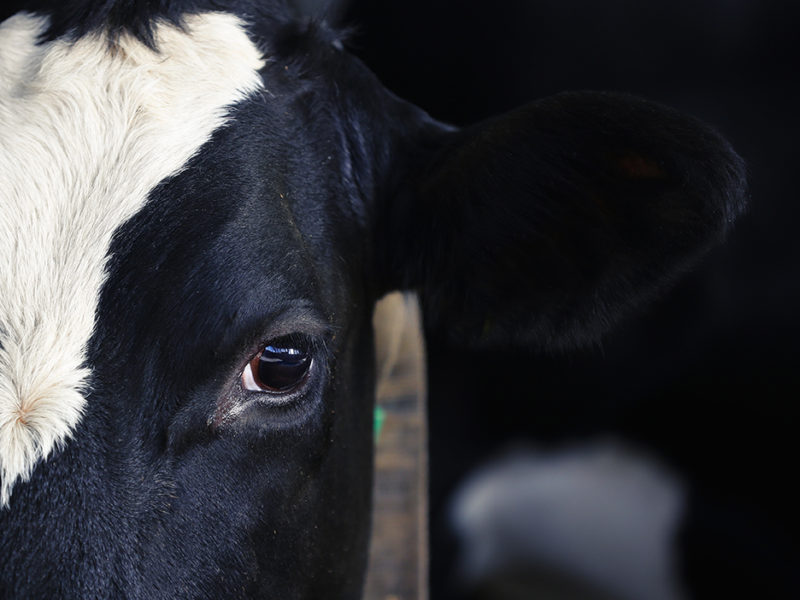ABBOTSFORD – A growing number of dairy farms in the Fraser Valley are considering selling as narrow margins get tighter and high financing costs complicate succession plans.
“The dairy [sector] is particularly challenged,” says Karen Taylor, director of corporate finance, agriculture and agribusiness with BMO Financial Group in Abbotsford, who addressed a workshop the Centre for Organizational Governance in Agriculture hosted, January 17. “Some of them are going to sell the farm because they can’t afford that debt level, or they minimize their farm size a little bit.”
According to industry sources, between 30 and 40 of the 600 dairy farms in BC are feeling significant financial pressure. While dairying is built on land and quota – two relatively solid assets – a dramatic rise in interest rates over the past year has made it more difficult to service the debt they’ve been able to take on.
“[We’re] happy to lend to dairy farmers because they have stable cash flow and high-quality collateral,” says Taylor, who works with some of the Fraser Valley’s larger dairies. “But in some cases the debt is significant, and if you amortize all of that debt at a 6% or 7% interest, there potentially could be a problem.”
Cash flow is key, she says.
Grain and oilseed crops have generated strong cash flows for Prairie growers, according to Farm Credit Canada, supporting the expansion of their operations and higher farmland values. But the higher cost of grain has boosted feed prices in BC, squeezing the margins of livestock producers.
Worse, the price of milk has not kept pace with the costs facing dairy farmers. This has made it harder to meet expenses, and service debt.
“We have to make sure the farm can cash-flow at higher interest rates,” says Taylor. “The dairy sector in particular over the next 12 months … we’re definitely figuring out what are we going to do, and what are we going to do going forward. How long is this increase going to last?”
The keynote presenter at the workshop was BMO senior economist Robert Kavcic, who describes the dramatic shift in interest rates over the past year as a generational event that will last until 2024.
“Rate cuts are going to start to be a 2024 story, simply because I think policymakers want to err on the side of leaving rates higher for longer and making sure they crack that inflation nut rather than backing off too soon,” he explains.
Kavcic expects interest rates to settle back into the 2% to 3% range once the current surge is over. The Bank of Canada policy rate at press time was 4.25%, up from 0.25% a year ago. A further hike was anticipated January 25, with commercial loans running about two percentage points higher.
Many farms have yet to feel the real pain from higher borrowing costs, however, as the rates primarily affect variable-rate financings as well as new debt. This sets up 2023 as a year of pain for highly leveraged operations.
“The high rates haven’t even funnelled through the system yet,” says Taylor. “This is just starting.”
Some older farmers are taking note, however, and changing up their succession plans. Rising capital costs are prompting some to consider selling rather than hand the farm onto a new generation, which would be saddled with higher costs in a low-margin environment.
“That is being discussed because now, if your facilities are old (and sometimes with succession planning that is the case, that facilities need to be rebuilt), now you’re talking about 6% money rather than 3% money,” Taylor says. “If someone takes over the farm, they’re also thinking about where can I grow, how do I buy the neighbour now that I have to pay 6% interest versus 3% interest? … The interest rate factor is definitely impacting succession planning conversations.”
But sales don’t necessarily need to lead to consolidation. While dairy farms in BC have doubled in size over the past 20 years and now average 131 head per farm, they haven’t necessarily become more efficient.
BMO recently surveyed 68 of its clients and found that smaller farms sometimes perform better
“It wasn’t all the big farms that were in the top,” says Taylor. “Sometimes you can get too big and have inefficiencies because of that.”
BC Dairy Association is surveying its members to better understand their operating environment.
“We have heard numerous anecdotal stories about dairy farmers struggling to make ends meet despite recent wholesale rate increases, which don’t match increasing costs,” the association said in a statement. “We are currently conducting a study on business costs to better understand the impacts at an industry level.”


 Greenhouse extends growing season, sales
Greenhouse extends growing season, sales